Презентація на тему «Cardiff Castle»
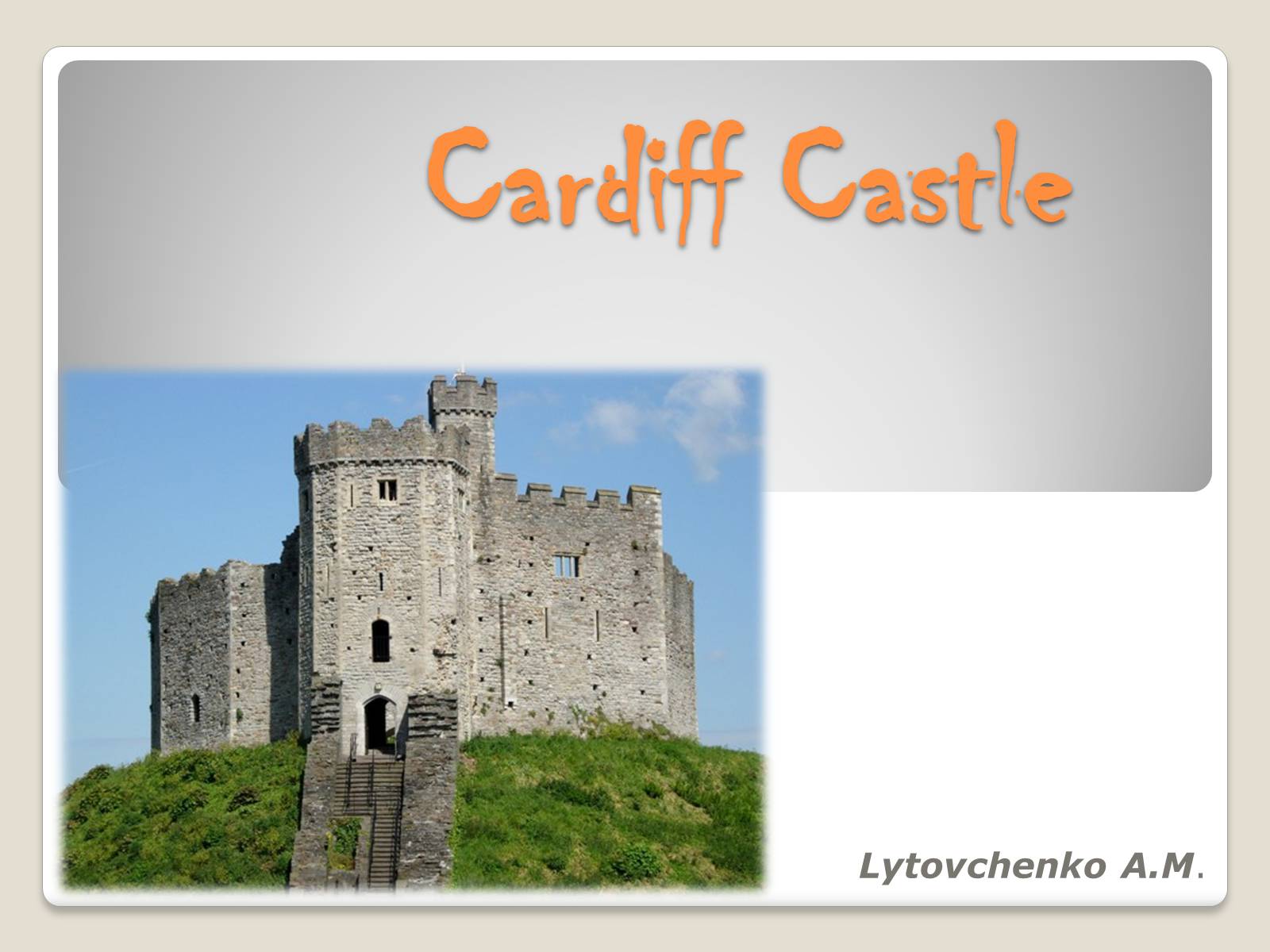
Cardiff Castle
Lytovchenko A.M.

Cardiff Castle is a medieval castle and Victorian Gothic revival mansion located in the city centre of Cardiff, Wales. The original motte and bailey castle was built in the late 11th century by Norman invaders on top of a 3rd-century Roman fort. The castle was commissioned by either William the Conqueror or by Robert Fitzhamon, and formed the heart of the medieval town of Cardiff and the Marcher Lord territory of Glamorgan. In the 12th century the castle began to be rebuilt in stone, probably by Robert of Gloucester, with a shell keep and substantial defensive walls being erected. Further work was conducted by Richard de Clare in the second half of the 13th century. Cardiff Castle was repeatedly involved in the conflicts between the Anglo-Normans and the Welsh, being attacked several times in the 12th century, and stormed in 1404 during the revolt of Owain Glyndŵr.
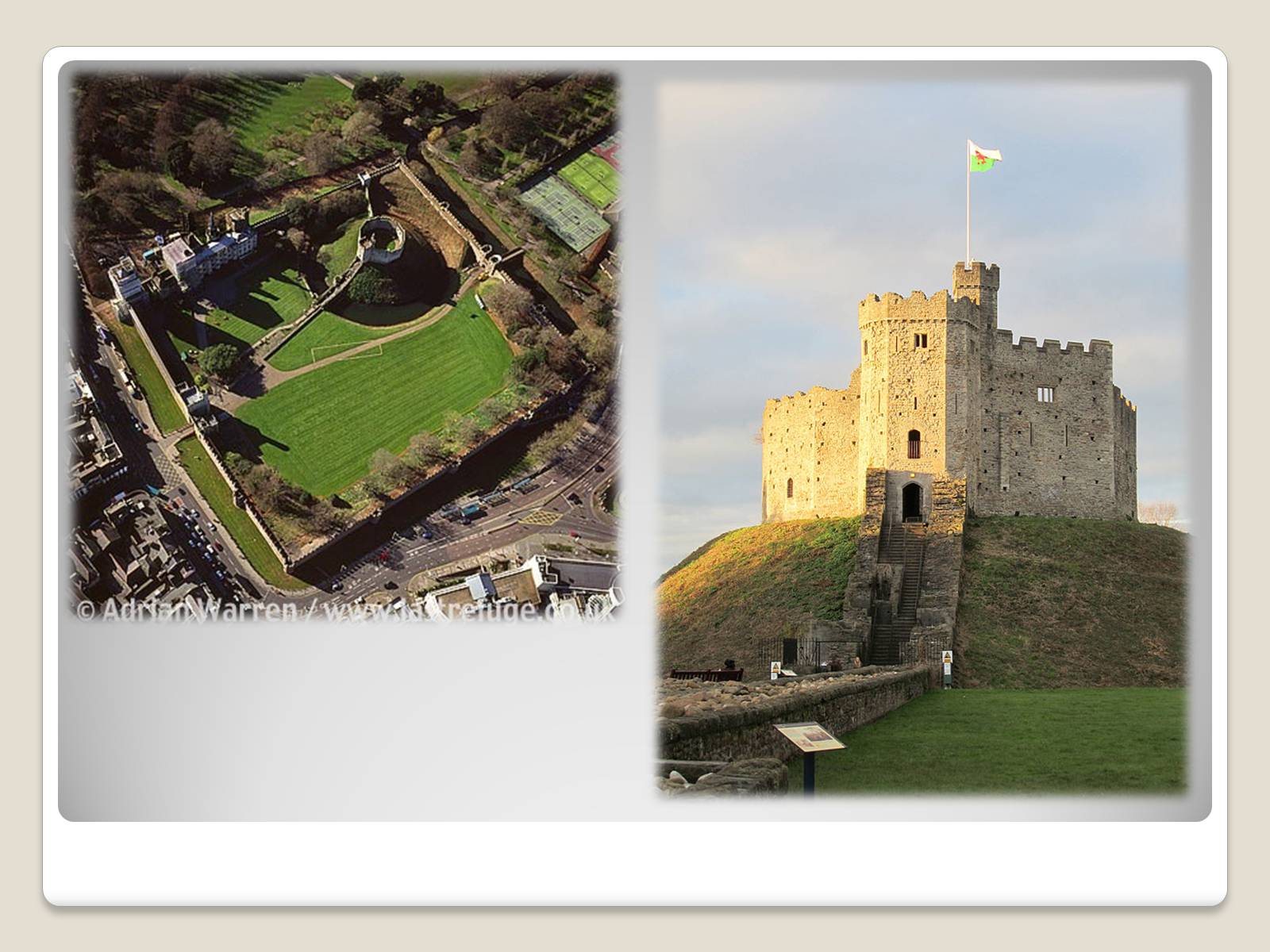
Cardiff Castle is a medieval castle and Victorian Gothic revival mansion located in the city centre of Cardiff, Wales. The original motte and bailey castle was built in the late 11th century by Norman invaders on top of a 3rd-century Roman fort. The castle was commissioned by either William the Conqueror or by Robert Fitzhamon, and formed the heart of the medieval town of Cardiff and the Marcher Lord territory of Glamorgan. In the 12th century the castle began to be rebuilt in stone, probably by Robert of Gloucester, with a shell keep and substantial defensive walls being erected. Further work was conducted by Richard de Clare in the second half of the 13th century. Cardiff Castle was repeatedly involved in the conflicts between the Anglo-Normans and the Welsh, being attacked several times in the 12th century, and stormed in 1404 during the revolt of Owain Glyndŵr.
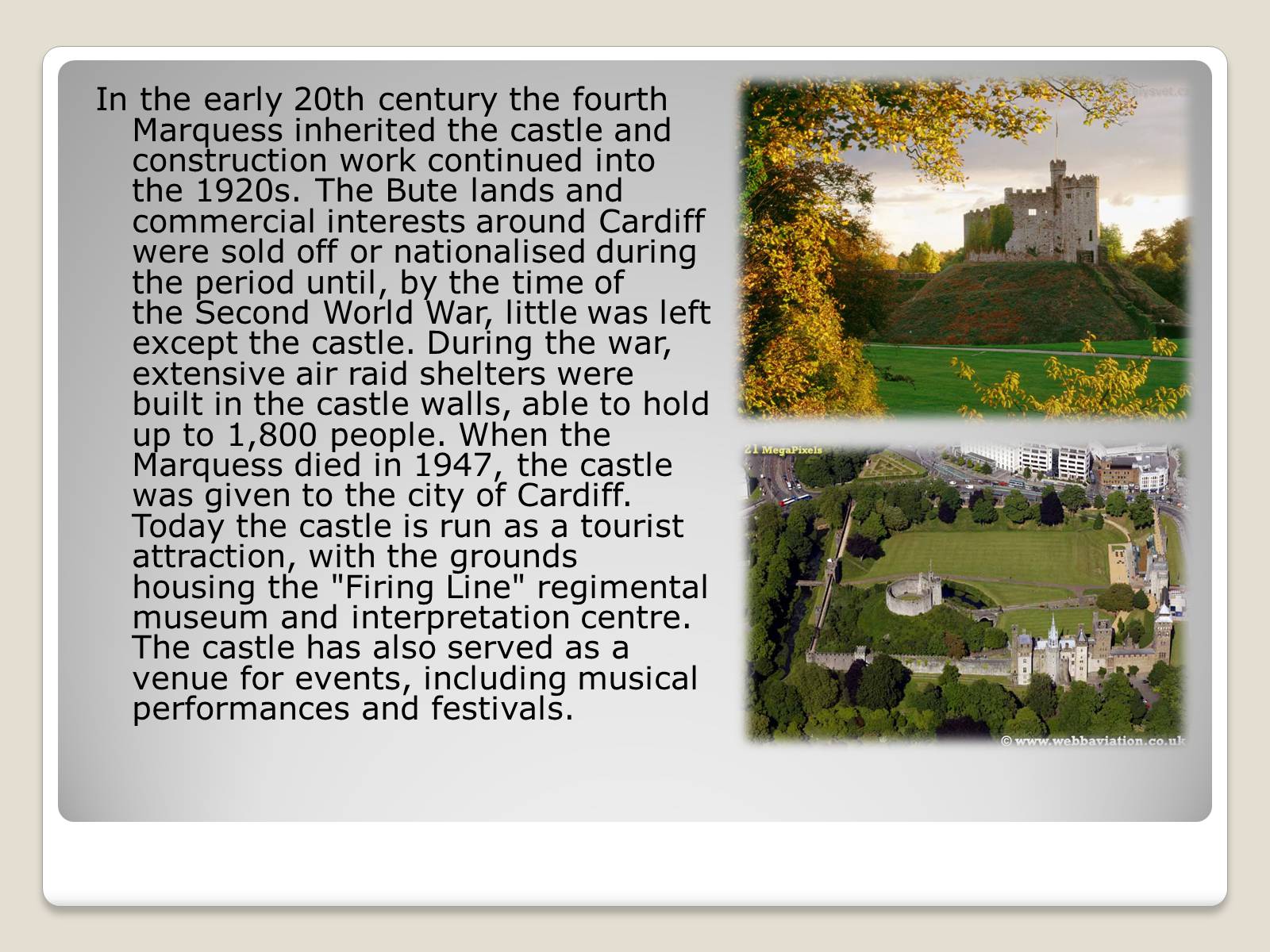
In the early 20th century the fourth Marquess inherited the castle and construction work continued into the 1920s. The Bute lands and commercial interests around Cardiff were sold off or nationalised during the period until, by the time of the Second World War, little was left except the castle. During the war, extensive air raid shelters were built in the castle walls, able to hold up to 1,800 people. When the Marquess died in 1947, the castle was given to the city of Cardiff. Today the castle is run as a tourist attraction, with the grounds housing the "Firing Line" regimental museum and interpretation centre. The castle has also served as a venue for events, including musical performances and festivals.
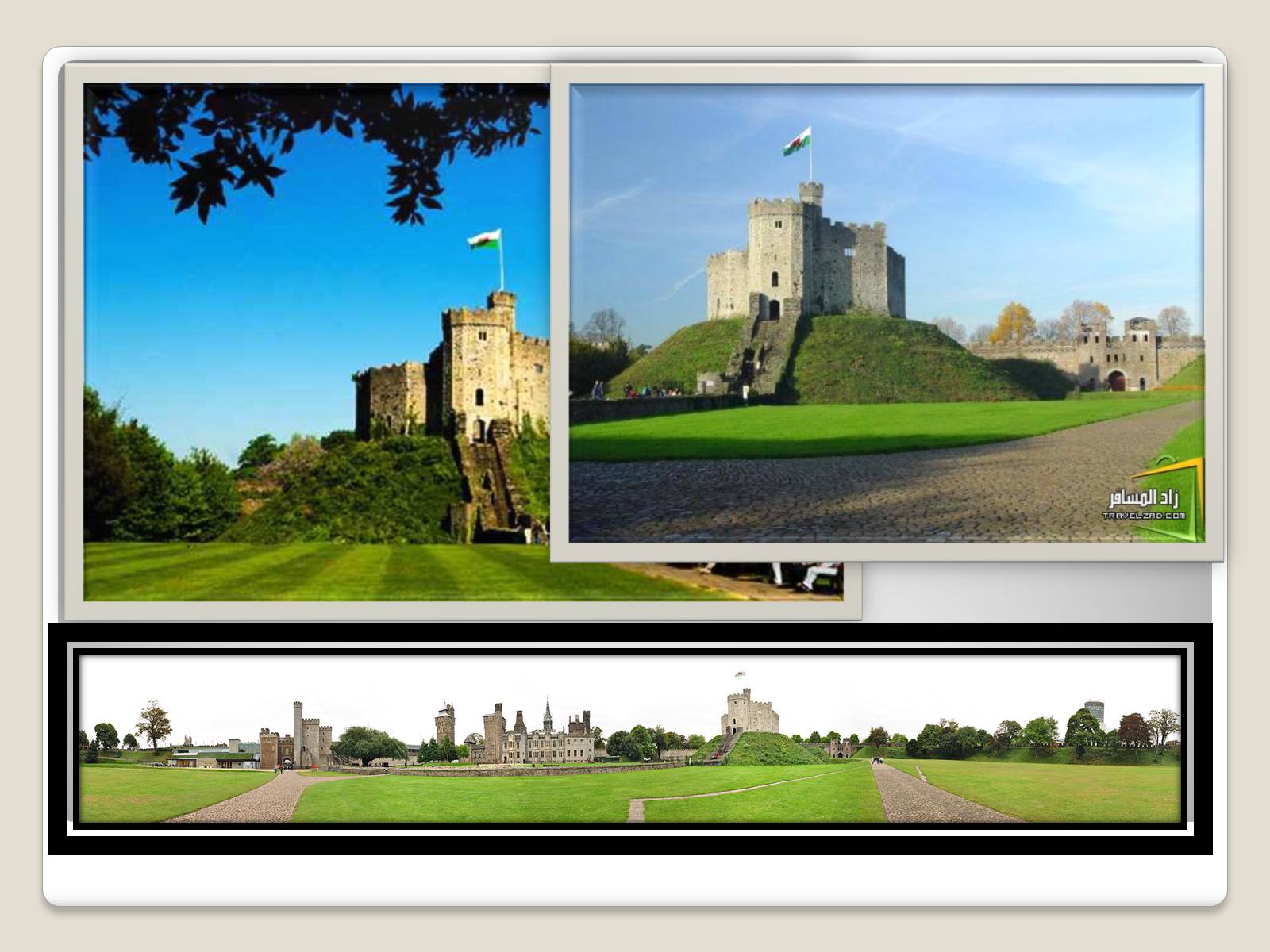
In the early 20th century the fourth Marquess inherited the castle and construction work continued into the 1920s. The Bute lands and commercial interests around Cardiff were sold off or nationalised during the period until, by the time of the Second World War, little was left except the castle. During the war, extensive air raid shelters were built in the castle walls, able to hold up to 1,800 people. When the Marquess died in 1947, the castle was given to the city of Cardiff. Today the castle is run as a tourist attraction, with the grounds housing the "Firing Line" regimental museum and interpretation centre. The castle has also served as a venue for events, including musical performances and festivals.
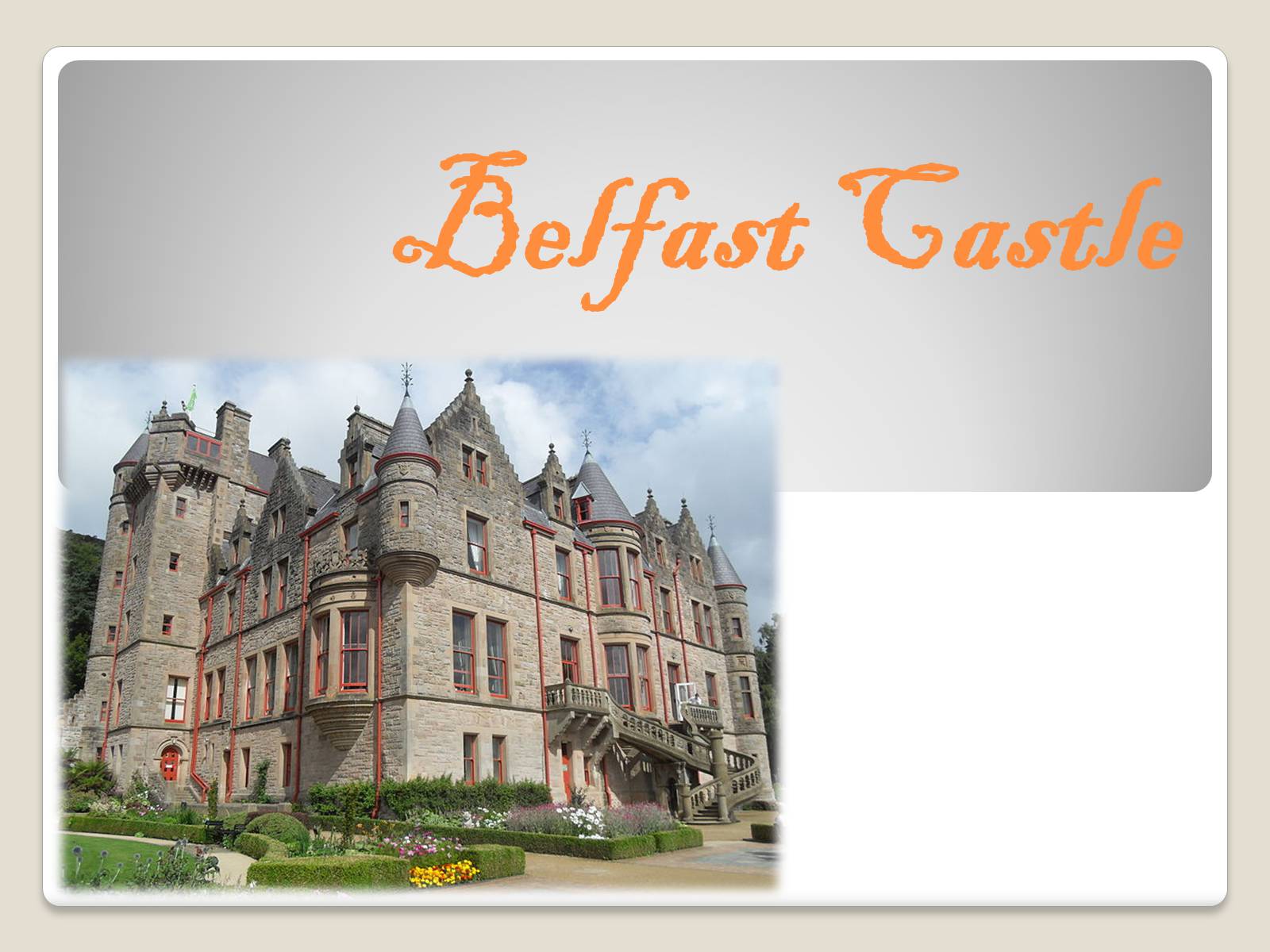
Belfast Castle

Belfast Castle is set on the slopes of Cavehill Country Park, Belfast, Northern Ireland in a prominent position 400 feet (120 m) above sea level. Its location provides unobstructed views of the city of Belfast and Belfast Lough.
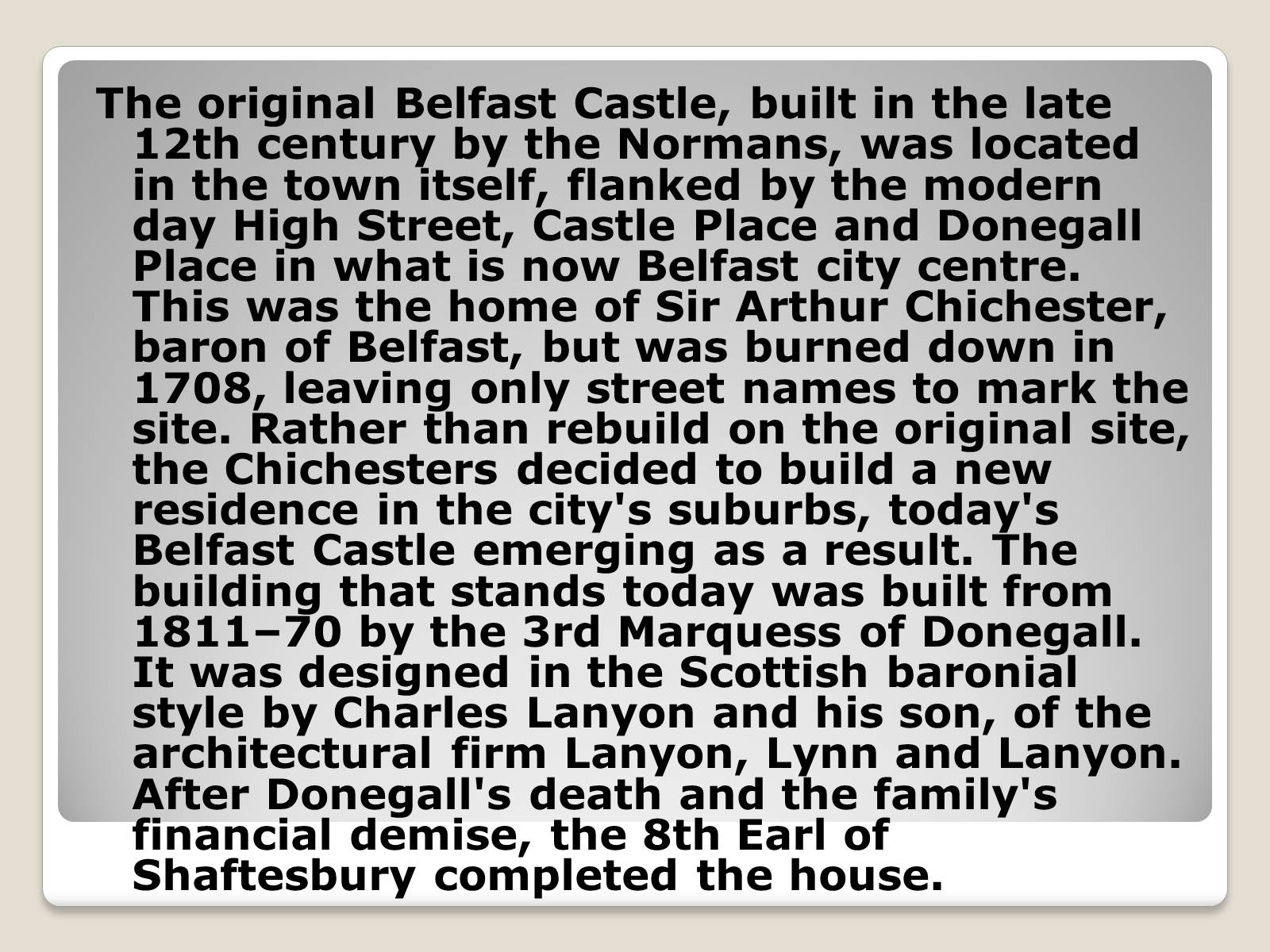
The original Belfast Castle, built in the late 12th century by the Normans, was located in the town itself, flanked by the modern day High Street, Castle Place and Donegall Place in what is now Belfast city centre. This was the home of Sir Arthur Chichester, baron of Belfast, but was burned down in 1708, leaving only street names to mark the site. Rather than rebuild on the original site, the Chichesters decided to build a new residence in the city's suburbs, today's Belfast Castle emerging as a result. The building that stands today was built from 1811–70 by the 3rd Marquess of Donegall. It was designed in the Scottish baronial style by Charles Lanyon and his son, of the architectural firm Lanyon, Lynn and Lanyon. After Donegall's death and the family's financial demise, the 8th Earl of Shaftesbury completed the house.
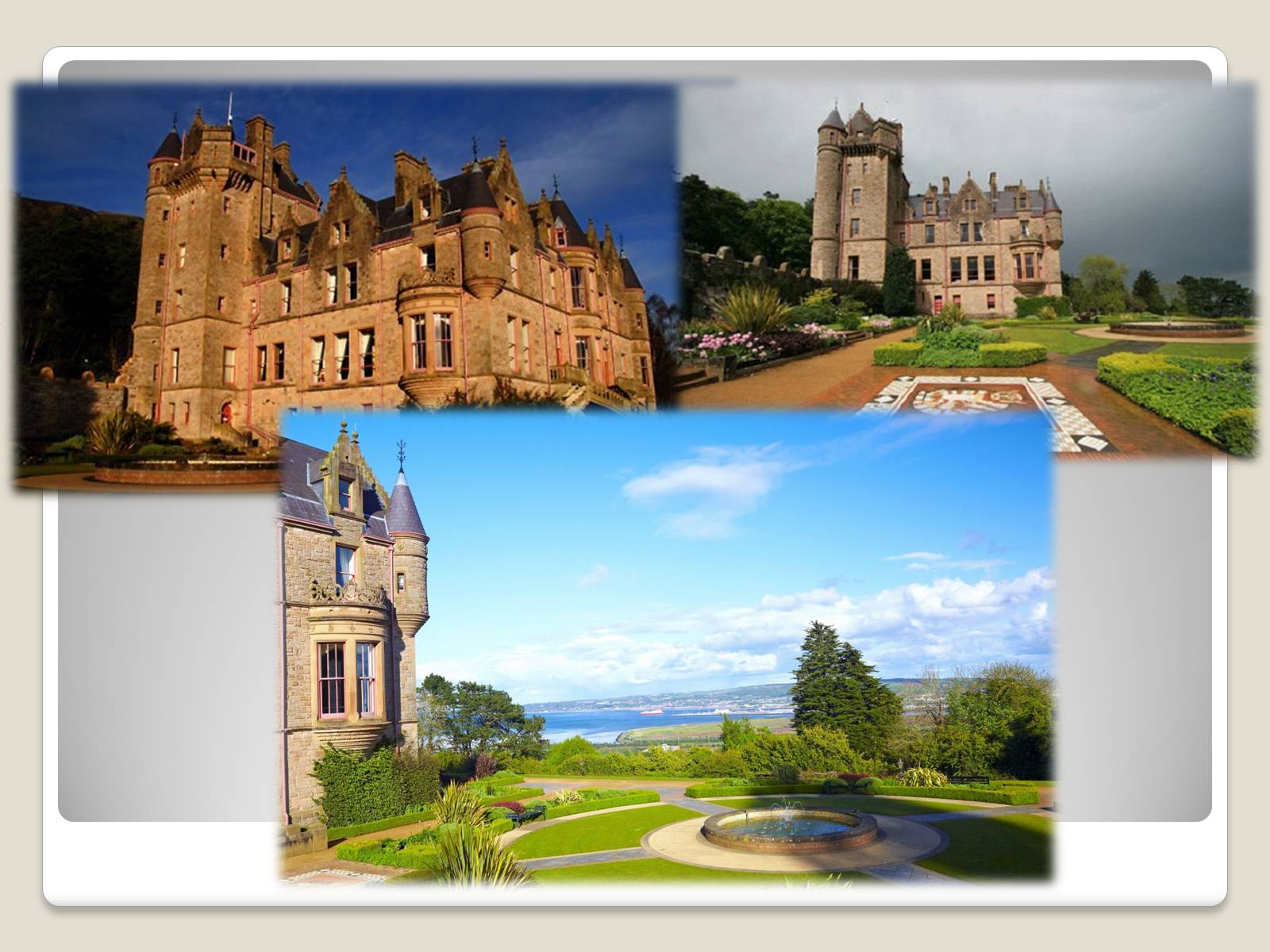
The original Belfast Castle, built in the late 12th century by the Normans, was located in the town itself, flanked by the modern day High Street, Castle Place and Donegall Place in what is now Belfast city centre. This was the home of Sir Arthur Chichester, baron of Belfast, but was burned down in 1708, leaving only street names to mark the site. Rather than rebuild on the original site, the Chichesters decided to build a new residence in the city's suburbs, today's Belfast Castle emerging as a result. The building that stands today was built from 1811–70 by the 3rd Marquess of Donegall. It was designed in the Scottish baronial style by Charles Lanyon and his son, of the architectural firm Lanyon, Lynn and Lanyon. After Donegall's death and the family's financial demise, the 8th Earl of Shaftesbury completed the house.
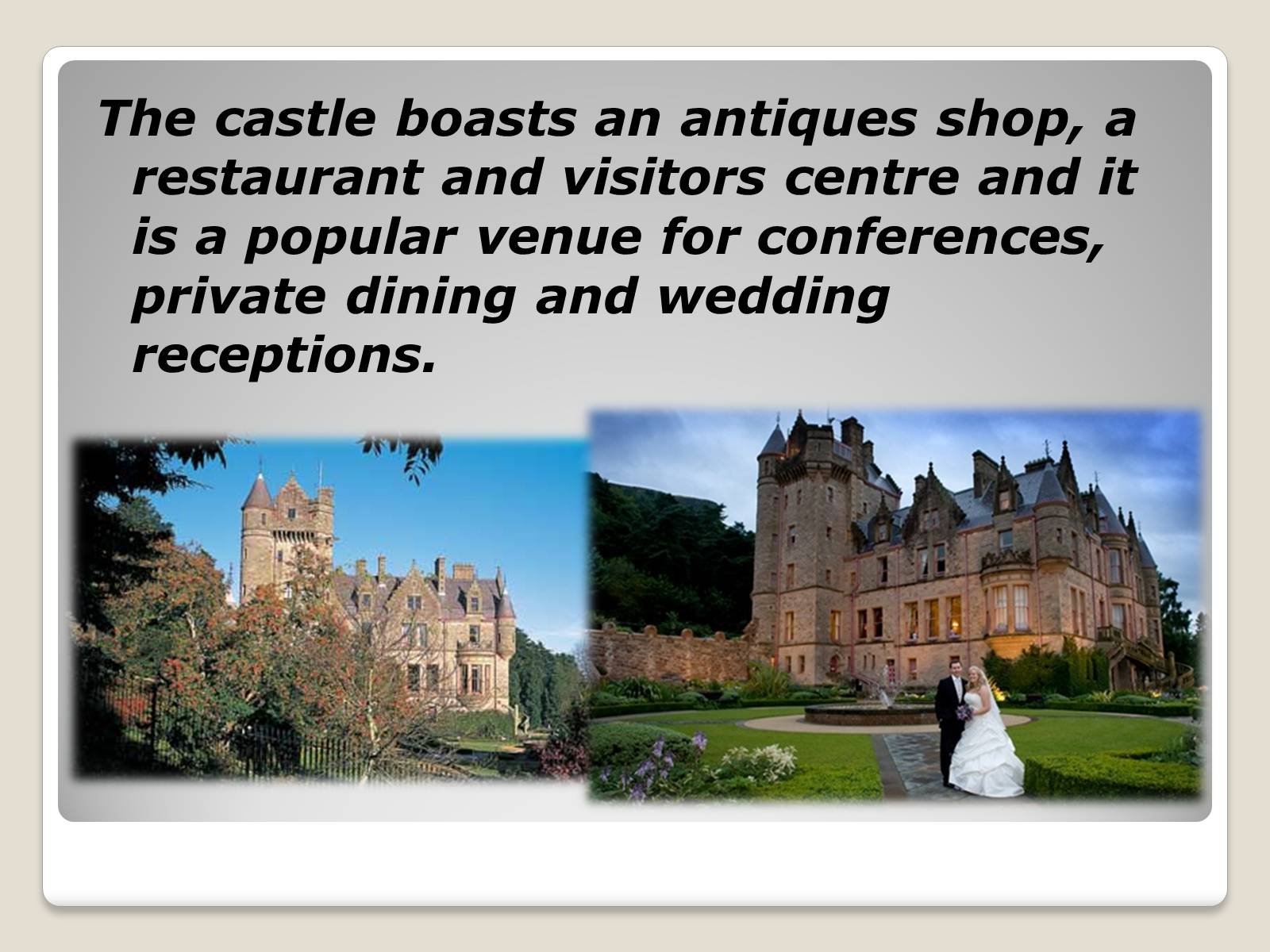
The castle boasts an antiques shop, a restaurant and visitors centre and it is a popular venue for conferences, private dining and wedding receptions.

Thank you for your attention